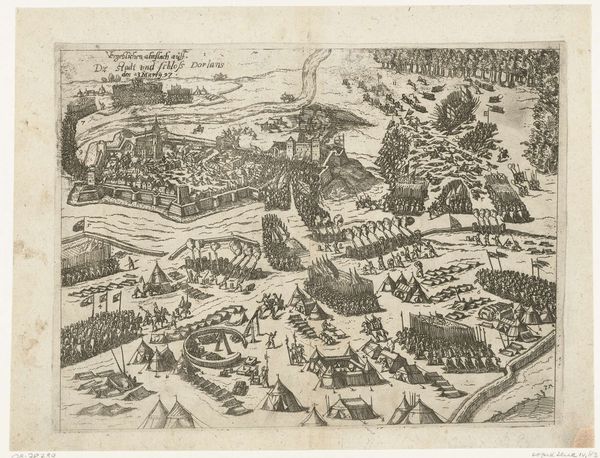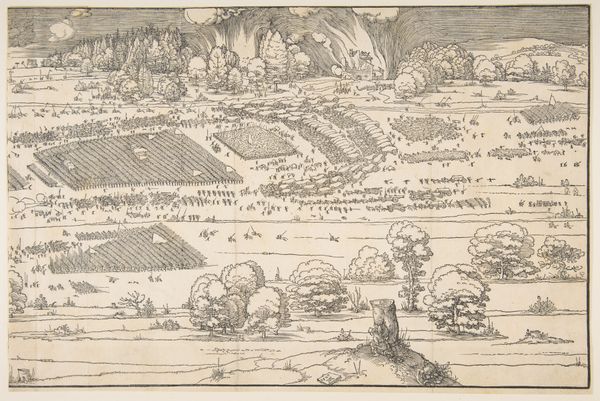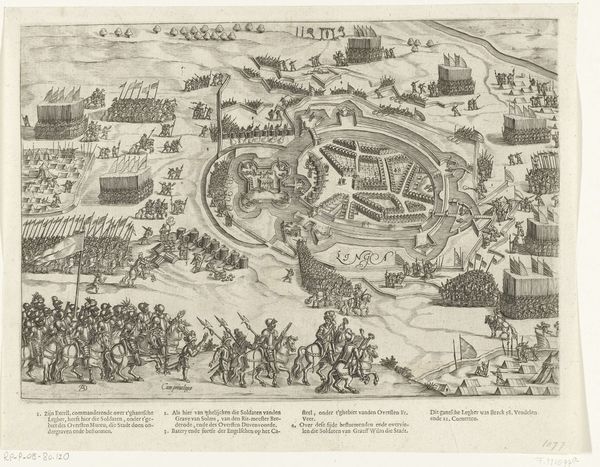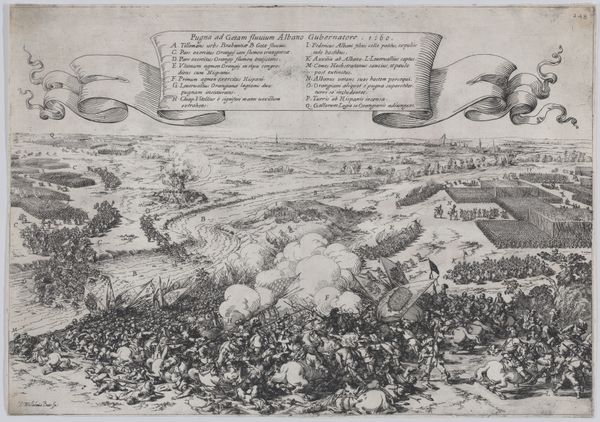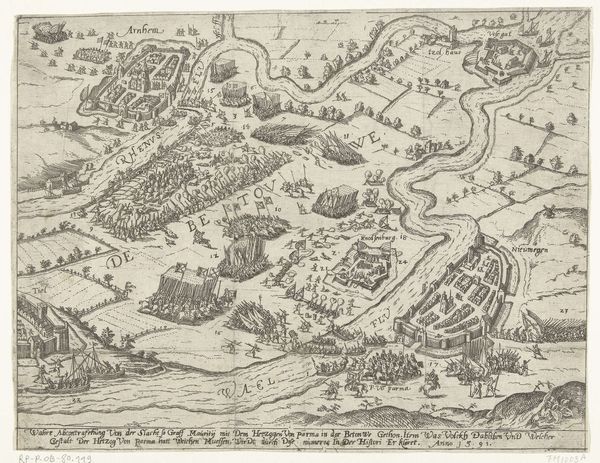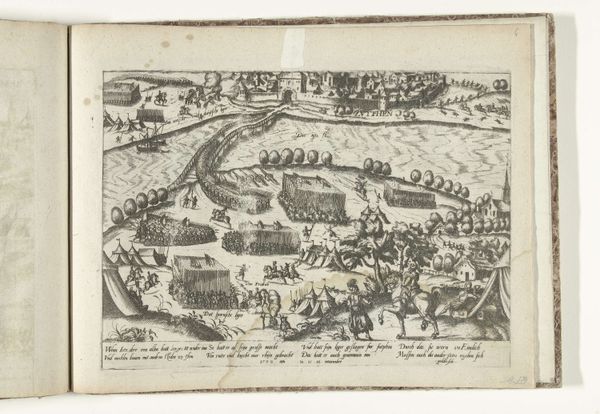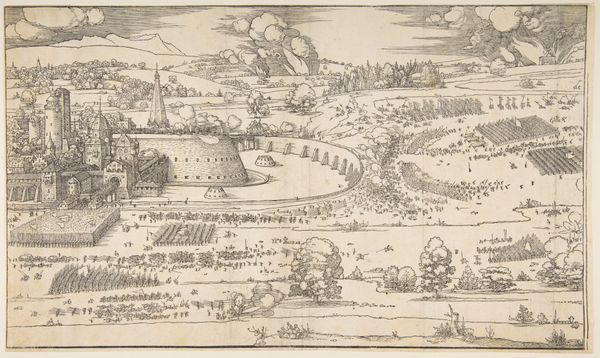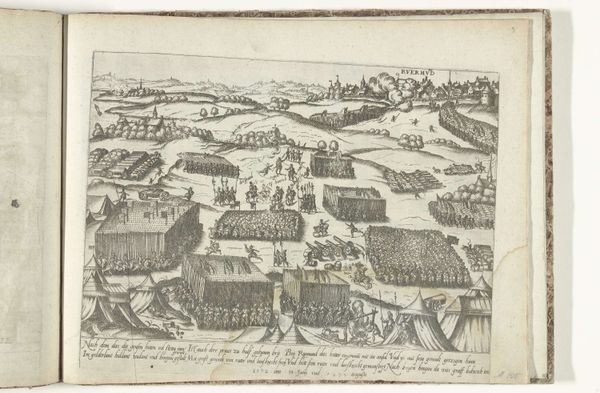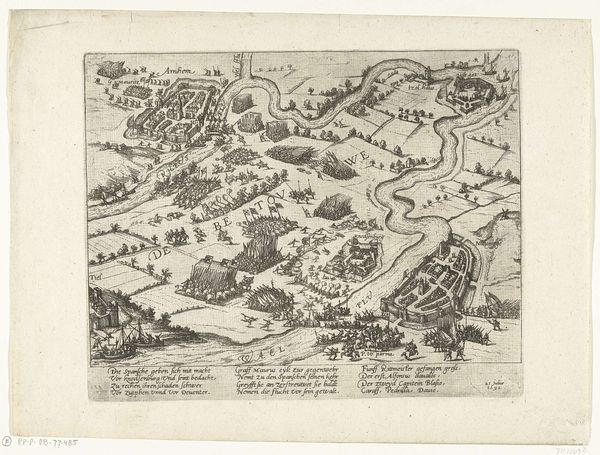
print, engraving
#
narrative-art
# print
#
old engraving style
#
11_renaissance
#
history-painting
#
engraving
Dimensions: height 377 mm, width 505 mm
Copyright: Rijks Museum: Open Domain
Curator: Immediately, I'm struck by the intense, almost chaotic energy radiating from this engraving. The sheer density of figures and details creates a palpable sense of conflict. Editor: This detailed print from 1570 by Jean Perrissin depicts 'Saint-Gilles ontzet door de protestanten, 1562' an episode illustrating the battles between Protestants and Catholics in Languedoc during that turbulent period. We see more than just combat. It speaks of the intersection of religious belief and power. Curator: Power is definitely a strong element, you see it in the composition with figures arrayed in every corner, their weapons and formations contributing to this overall atmosphere of military order…or at least, the *attempt* at order. It seems allegorical of human folly when we fail to learn from destruction, but attempt to control. It even feels contemporary because we see this replicated through all eras and conflicts, and especially now on a mass global scale. Editor: Indeed. Perrissin isn’t merely presenting a battle scene, he’s embedding it within a very specific historical moment – the French Wars of Religion. Understanding that context transforms this from just a collection of figures into a potent statement on religious conflict. Consider that Saint-Gilles, now Saint-Gilles du Gard, served as a contested space between Huguenots and Catholics. This print showcases it as an illustration of sociopolitical fracture of its time. Curator: And visually, note the precision and linearity that’s typical of engravings, a commitment to a particular kind of visibility. But it doesn’t smooth over the ugliness, does it? All those tiny scratches contribute to the chaos. We're dealing with social stratification too; that can also reflect gender. It can reveal nuances about that war; not just about combat between men on horseback, but also how entire social and family structures of life were at stake. It reveals how society falls into a system under conditions that dehumanize one another, especially people of diverse backgrounds or values. Editor: Right, and engaging with feminist and race theories allows one to examine not only warfare, but its far-reaching repercussions on individuals, communities and cultural memory. These violent episodes always involve gendered elements whether through trauma, loss, grief and shifts in familial dynamics; furthermore how these can trigger questions around concepts like trauma, agency, and social restructuring that intersect race. The meticulous detail in the characters is important: notice who occupies which spaces and the consequences that has across economic strata? It really gives pause for introspection. Curator: A striking piece indeed that provides, despite its apparent simplicity, plenty to consider! Editor: Absolutely; art like this functions as a powerful tool, reminding us that behind every grand historical narrative lie complex human experiences.
Comments
No comments
Be the first to comment and join the conversation on the ultimate creative platform.
